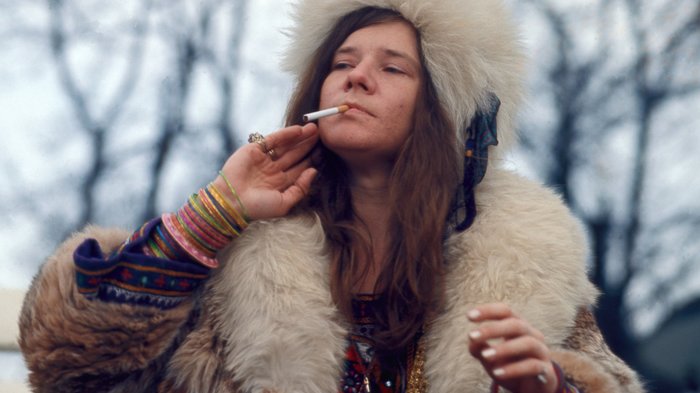Rocker docs lie thick on the ground these days, most of them landlocked in a tired arc of childhood stress, rapid rise to stardom filled with drugs and debauchery, followed by decline and, for those who survive, extravagant rue-ing the day. And given the short, sharp life of Janis Joplin, any account of her has to spend time in that terrain. But though Janis: Little Girl Blue — Amy J. Berg’s loving, exhaustively researched documentary about the whiskey-voiced blues interpreter — gives Joplin’s dark side its due, the film rarely succumbs to mawkish wallowing.
Berg is an honestly partisan filmmaker of social-issue documentaries (Deliver Us from Evil and West of Memphis); Janis has an analytical edge, but it’s also a celebration that refuses to bog down Joplin in her sad adolescence, her troubles with love, or the booze and heroin habit that brought about her lonely 1971 death in a motel at age 27. Given that Joplin was an open book both on and offstage, a case could be made for letting rip with a pure concert movie. There’s plenty of wonderfully wild onstage footage and charming, behind-the-scenes goofing around here, and the movie is a fan’s appreciation of how much exuberant fun Joplin could be on and offstage, of her ferocious work ethic and mischievous spirit.
Joplin also never hid her ravenous hunger to be loved. Distilled through her own testimony (narrated by singer-songwriter Cat Power) and that of an army of family and friends, boyfriends (and one astute former girlfriend who has Joplin’s number on many fronts), music business chieftains and bit players, Janis builds a properly inconsistent portrait of a woman of many parts she was never able to reconcile.
That was both her triumph and her tragedy from the moment when, as an awkward teenager in the small Texas town of Port Arthur, she escaped from neglect and abuse by her peers into the blues and folk music that bubbled below the radar of saccharine early ’60s pop. That these were not happy years is well known, and rocker biographies can be glib about attributing their subjects’ suffering to dysfunctional families. People are always more mysterious than what their parents did or didn’t do to them, and Berg treads carefully here, avoiding speculation about Joplin’s parents. They remain mostly loving but shadowy, conventional figures, bewildered by a daughter who wrote them poignant letters apologizing for being such a disappointment to them. Evidently it didn’t help much: Berg unearths a letter from Janis’ father well into her superstardom, inquiring whether he should cancel her pending college registration.
Joplin’s sister Laura bears sympathetic witness to the acne and fluctuating weight and the broad, flat features that were an endless source of anguish for Janis, who for while wanted nothing more than to fit in among the athletes and cheerleaders who scorned or ignored her. Does Berg exaggerate the causal reach of the bullying that Joplin endured at school into her lifelong insecurity? Perhaps, if only because most high schools are littered with put-upon square pegs who grow into perfectly upstanding but ordinary citizens.

9(MDAxOTAwOTE4MDEyMTkxMDAzNjczZDljZA004))

